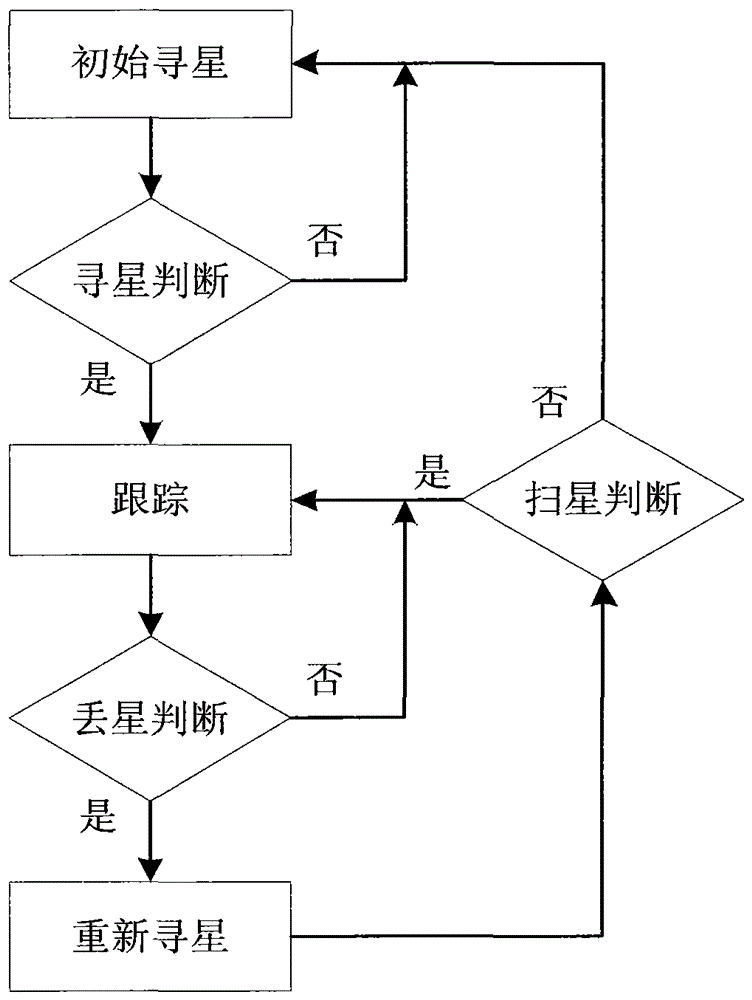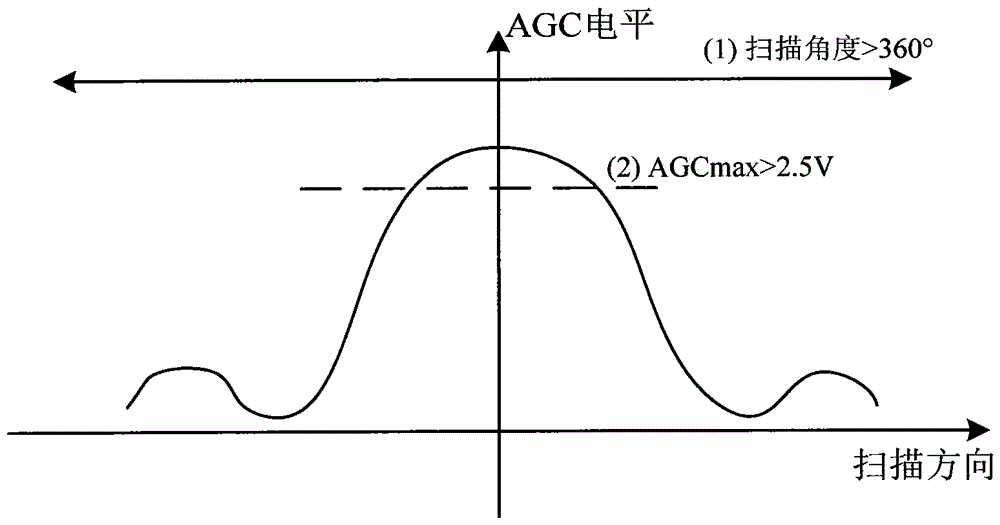A Method of Finding Satellites with an Antenna in Motion
A mobile communication and antenna technology, applied to antennas, electrical components, etc., can solve problems such as low precision, decreased tracking performance, and decreased success rate of finding stars, so as to achieve improved reliability and accuracy, good tracking accuracy, and high reliability Effect
- Summary
- Abstract
- Description
- Claims
- Application Information
AI Technical Summary
Problems solved by technology
Method used
Image
Examples
Embodiment Construction
[0032] 1. A satellite-seeking method for antennas in motion, such as figure 1 shown, including the following steps:
[0033] (1) Before the antenna is initially powered on and enters the tracking state, the antenna conducts initial star-seeking, and determines whether the satellite signal has been found through the star-finding judgment; after the antenna is turned on and homing is completed, it will automatically search for the satellite according to the information of the satellite to be tracked, Described initial star search comprises the following steps (as figure 2 shown):
[0034] 1) Set the beacon frequency of the antenna to the single carrier frequency of the satellite to be tracked;
[0035] 2) The azimuth angle of the antenna is rotated clockwise at a speed of 15° / s for rough scanning, and the pitch and polarization angles of the antenna are respectively isolated from the horizontal attitude of the carrier, so that the antenna can always maintain the spatial leve...
PUM
 Login to View More
Login to View More Abstract
Description
Claims
Application Information
 Login to View More
Login to View More - R&D
- Intellectual Property
- Life Sciences
- Materials
- Tech Scout
- Unparalleled Data Quality
- Higher Quality Content
- 60% Fewer Hallucinations
Browse by: Latest US Patents, China's latest patents, Technical Efficacy Thesaurus, Application Domain, Technology Topic, Popular Technical Reports.
© 2025 PatSnap. All rights reserved.Legal|Privacy policy|Modern Slavery Act Transparency Statement|Sitemap|About US| Contact US: help@patsnap.com



